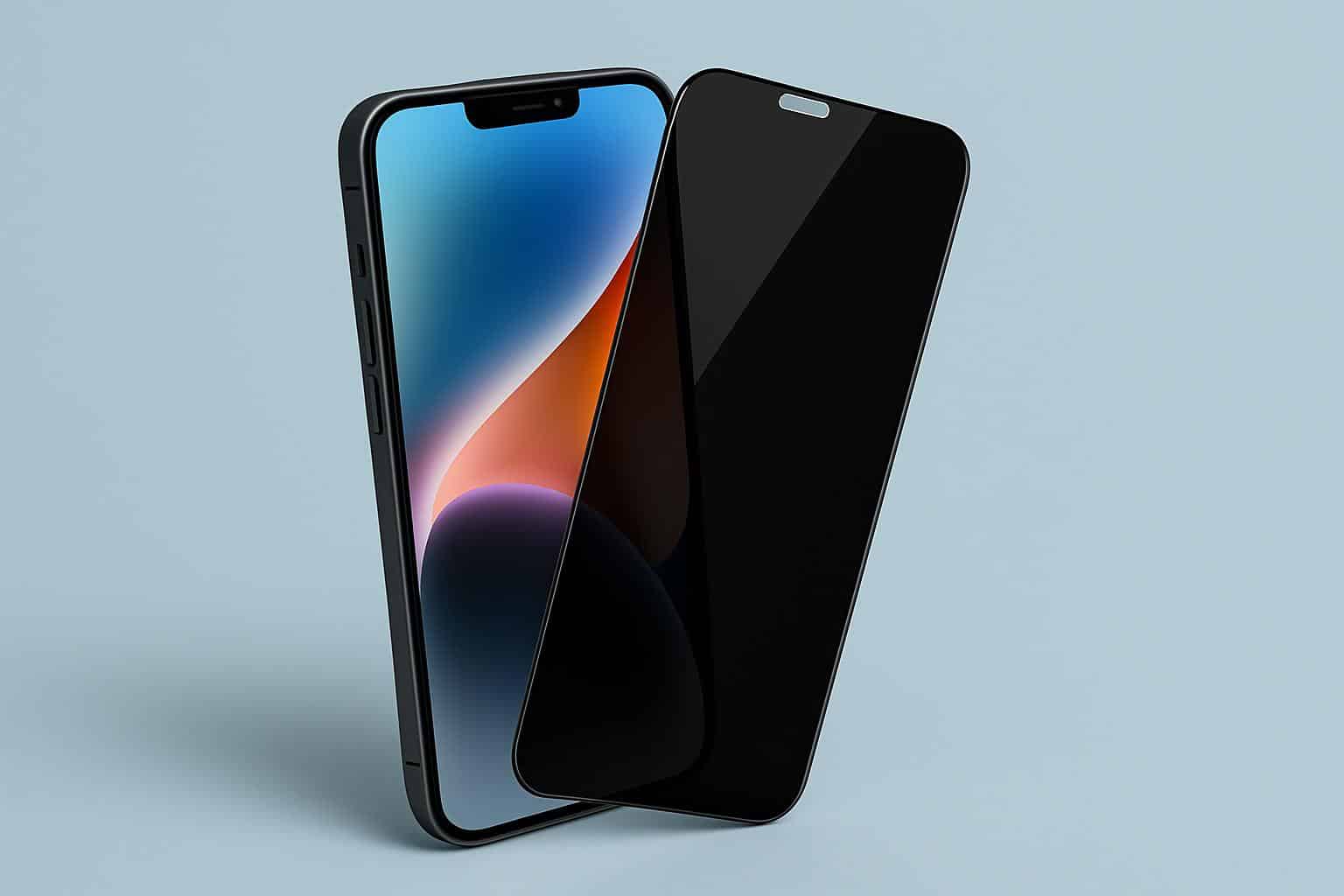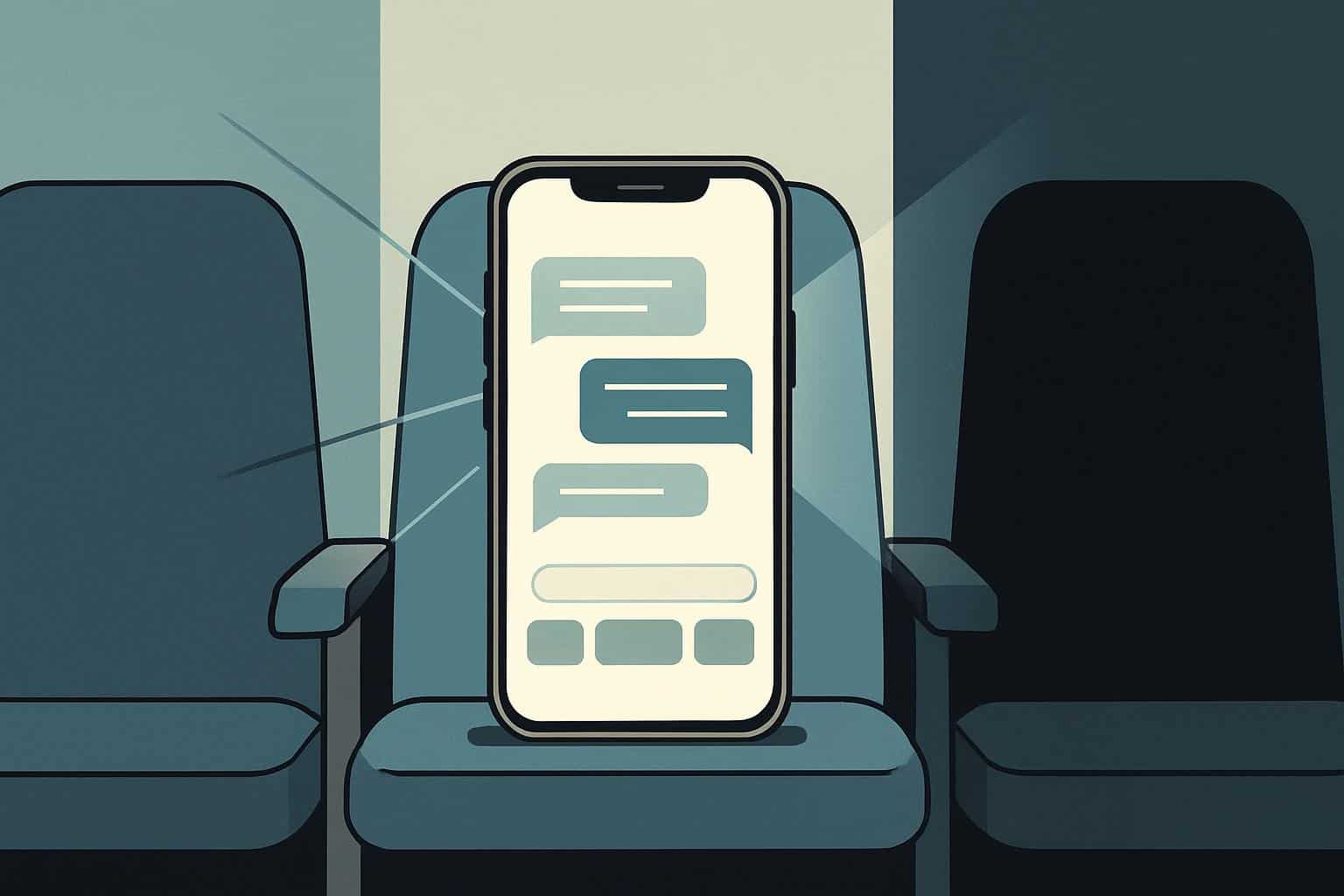Open offices, packed trains, and airport lounges — that is to say, “shoulder surfing” territory: the quick look at your phone that reveals texts, emails, or two-factor codes.
Privacy screen protectors offer a neat solution. Here’s how they work, where they work well, and what trade-offs to expect before you slap one on.
- How Privacy Screen Protectors Work to Block Side Views
- Why You Really Need One for Everyday Privacy
- The Trade-Offs You’ll Feel With Privacy Filters
- Compatibility and Installation Tips for Better Results
- What to Consider Before You Buy a Privacy Screen
- Intelligent Habits and Practices as a Filter
- Bottom Line on Using Smartphone Privacy Protectors

How Privacy Screen Protectors Work to Block Side Views
Many privacy protectors include a micro‑louver layer — picture almost microscopic window blinds — that restricts viewing to a small cone in front of the screen. Stare face-on, and the screen looks normal; angle a few seats over, and it fades to black.
Manufacturers tend to rate the viewing angles at about 60 degrees total (approximately 30 degrees off-center on both sides), but higher-end options sometimes provide even tighter views for greater privacy.
There are basically two styles: two‑way filters that block side views in portrait, and four‑way filters that obscure both portrait and landscape, useful for big phones and foldables while you’re watching video.
Tempered glass models most closely mimic the feel of a bare screen and offer more protection against impacts; PET/TPU film is thinner and generally plays nicer with in‑display fingerprint readers. Certain models also incorporate a matte anti-glare coating, oleophobic coatings to resist smudging, or an antimicrobial treatment on the surface.
Why You Really Need One for Everyday Privacy
Whether you’re dealing with customer data on-site, checking financials in a crowded coffee shop, or traveling on a train, the fact is, your information is at risk of being viewed by others.
Good ol’ visual hacking. In Ponemon Institute’s Visual Hacking Experiment, 89 percent of the time (versus 65 percent in our “hack”), observers successfully obtained unauthorized information through visual means — again, plain old shoulder surfing.
Regulated industries and bring‑your‑own‑device policies are also increasingly advising employees to use physical privacy tools in conjunction with software controls. Outside of corporate security, a filter can protect your messages from nosy neighbors and dim the glow that is keeping partners or roommates up at night.

The Trade-Offs You’ll Feel With Privacy Filters
It’s the drastic reduction in brightness that is the biggest compromise of all. That louver layer, blocking off‑axis light, will likely mean you’re jacking up your brightness a little higher to compensate, which can shave battery life. Color and contrast may also become slightly softer, particularly in matte editions.
Sharing becomes less fluid. Showing a photo to a friend requires finding the “sweet spot,” and building responsive filters is further complicated by four‑way viewing in landscape for groups. Even quick side glances at notifications are tougher — and that’s by design.
Biometrics can be affected. Yes, ultrasonic readers are again slower than optical ones in‑display, yet they pair well with thick glass privacy layers, while optical readers do better than ultrasonic sensors on this front. The latter can be challenged by thicker glass for privacy. Anticipate less hassle with a PET film or something “biometric‑friendly” that was specifically tested for your phone model.
Compatibility and Installation Tips for Better Results
Curved screens are tricky. Edge‑adhesive glass can peel up at the corners or show rainbowing with age; full‑adhesive models, or a flexible film, often stick more securely around curves. Select protectors with a little margin to stay case-compatible (the case won’t pinch and lift the edges).
Peel away using alignment frames where provided, and press outward to push out any micro‑bubbles.
You will have to re‑register fingerprints after installing, and on some devices enable touch‑sensitivity or screen protector modes in your settings.
What to Consider Before You Buy a Privacy Screen
- Privacy orientation: Select two‑way (portrait privacy, for easier video viewing and sharing) or four‑way (privacy in portrait and landscape modes) based on the way you use your phone.
- Viewing angle rating: Tighter angles result in stronger privacy but more on‑axis dimming. Many products will advertise 28–30 degrees per side; check the spec.
- Material and thickness: Tempered glass (usually ~0.33 mm, 9H) introduces drop protection and a glass touch, while PET/TPU is thinner and generally better if you have in‑display biometrics.
- Surface finish: Matte helps reduce glare and fingerprints but may show some sparkles. High‑gloss preserves more vibrant colors but is prone to reflection.
- Add‑on claims: Blue‑light filtering and antimicrobial coatings, not available on all brands, are offered at varying degrees. Antimicrobial coatings dissuade bacteria from settling on the surface; they are not health devices. Search out credible testing references instead of the buzzwords.
- Brand support: Most established accessory makers (3M, Belkin, and Spigen among them) get you better fit, clearer privacy layers, and a more reliable warranty. For phones with ultrasonic sensors, look for user reviews specific to the model you are considering.
Intelligent Habits and Practices as a Filter
Restrict lock-screen previews, reduce screen timeout, and leverage app‑specific privacy settings to hide private content. Some banking and password apps have secure views where you won’t be able to take screenshots or cast anything. The U.S. Federal Trade Commission also recommends being mindful of your environment and covering screens in public — a physical filter just makes that easier.
Bottom Line on Using Smartphone Privacy Protectors
A privacy screen protector is a convenient line of defense against everyday visual hacking, with a minor toll on brightness and shareability. If you work with sensitive data in public, or simply value discretion, select a model that’s compatible with your phone and your workflow; then install it carefully and combine it with smart software settings for an effortless, high‑impact privacy upgrade.

